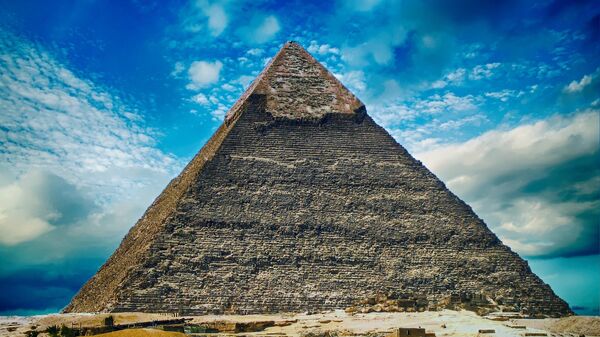Peter James, a structural engineer, believes the Great Pyramid of Giza bears an astounding number of secrets, even though most of the valued items were stolen from the structure in medieval times. The scientist, who has spent the last 14 years working on preserving ancient temples and historic buildings in Egypt and other countries, says there are many voids in the pyramid, which will lead scientists to even more discoveries.
"[The Great Pyramid] is structurally very sound and I’m sure there are holes and voids in there which are part of that. As they went up, they would have got to a point where they put support beams in, which would have created gaps. They would have left these empty or filled them with a material that is a different density to the outside. I’m sure there will be more similar discoveries in the future", James said.
Scientists can’t say with certainty how the humongous structure was built. It is known that 2.3 million blocks of limestone were used during the construction of the pyramid. One of the most popular theories is that the workers dragged huge blocks from a quarry located nearby and then lifted them.
However, Peter James believes that this theory is incorrect, saying ancient Egyptians had very simple construction techniques.
"As long as a block goes in and is the same height up, you can start on all four corners and go all the way up at the same 45 degrees. It’s exactly what masons do today; they make sure it's square. As the pyramid went up, the top got smaller. But no builder would ever put squared blocks inside. If you just build the outside foundation, you can fill it with much smaller blocks quicker", James said.
Peter James has restored numerous historical buildings around the world, including the Windsor Castle, a residence of the British Royal Family, and the White House. He claims it is possible to uncover the pyramid’s secrets using a small drill, but notes that the Egyptian authorities are opposed to this…
"One of the things I did when I went to the Bent Pyramid was say 'we drill holes up to 34 metres-long and 100mm in diameter – you can’t see where we’ve been'. I said, 'Why don’t you let me drill from the outside and tell you exactly what’s in there?' They wouldn’t allow me to, you have to remember the amount of money that comes from these ancient monuments, so they really don’t want all the secrets revealed at once. They still want the mystery so people can come in and spend their money on visiting.The amount of stuff that has not been unearthed is astounding", James said.

